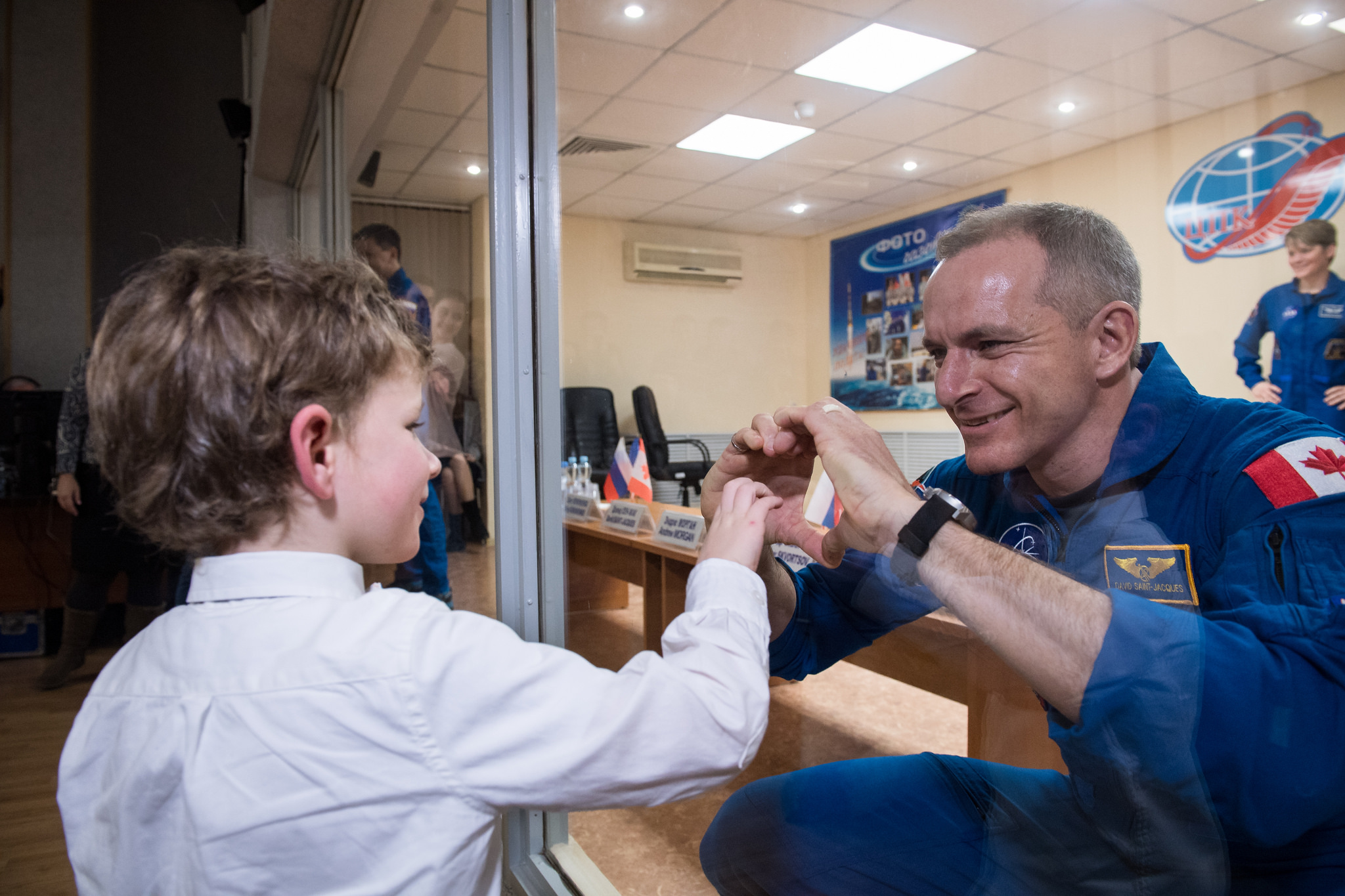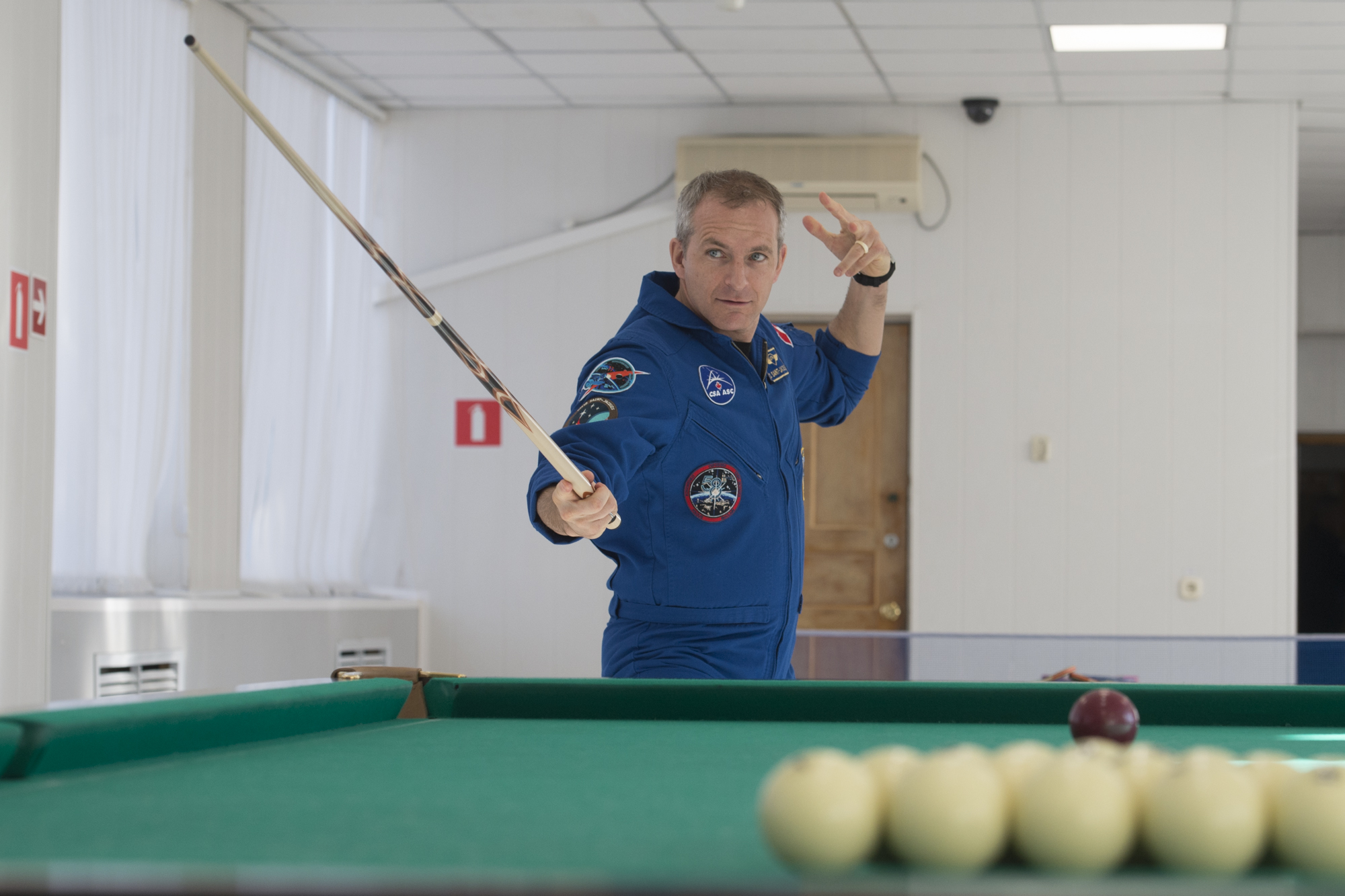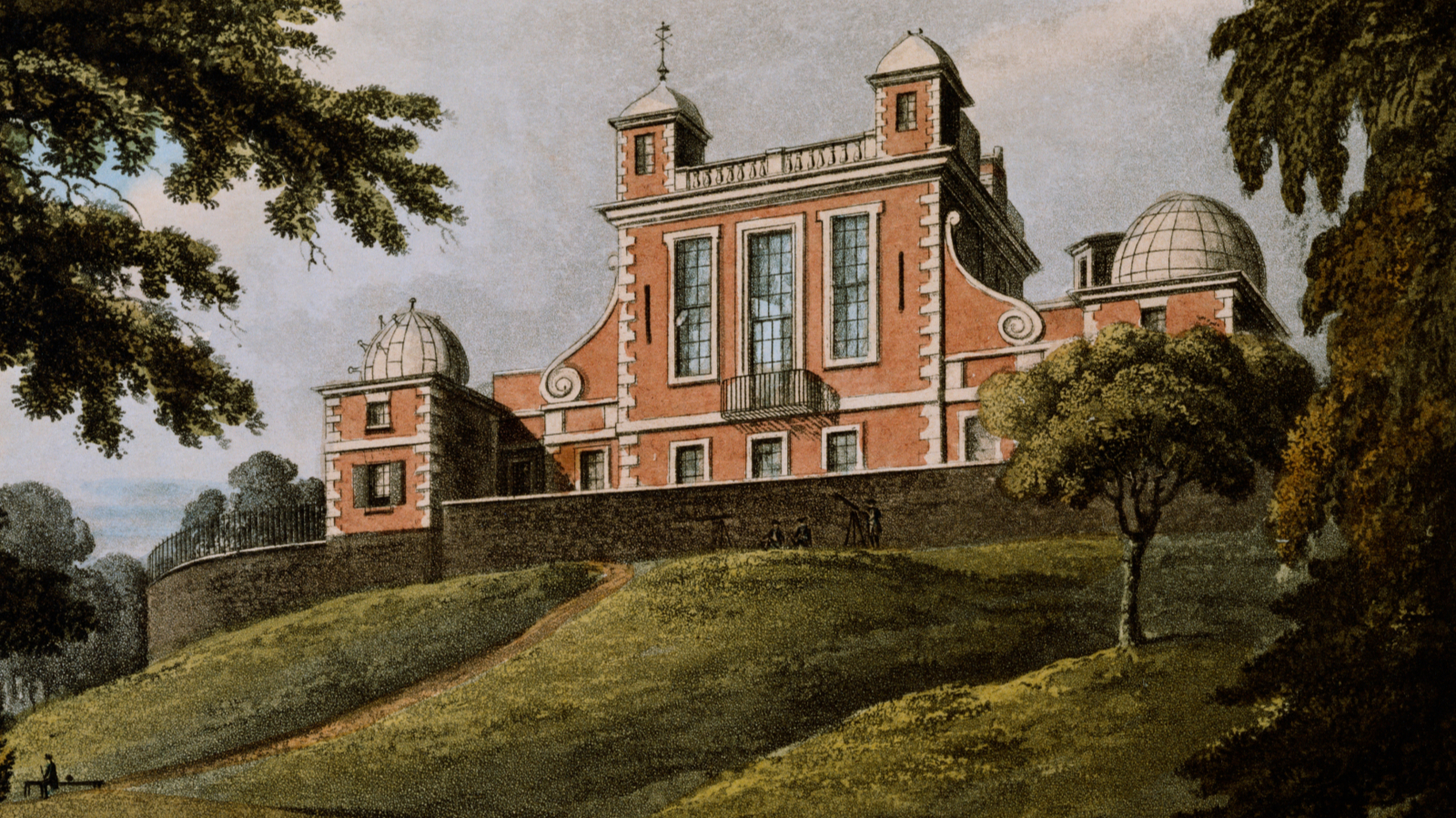Canada Celebrates Launch of First Astronaut in 6 Years
BAIKONUR COSMODROME, Kazakhstan — Although the weather was cold here, the Canadians didn't seem to mind. A small group of tourists came to watch the launch Monday (Dec. 3) of astronaut David Saint-Jacques, unveiling a huge Canadian flag during the Soyuz rocket rollout two days before.
Canadian pride was everywhere in the contingent of VIPs and astronaut family members flying to Baikonur Cosmodrome in Kazakhstan. It is a journey that takes nearly two days in a best-case scenario, but people still remembered to pack flags and red coats and other tokens displaying their national pride.
The Canadian Space Agency is especially pleased, of course. For Ken Podwalski, a senior agency official in space station operations, one of the biggest things that is exciting him is "the constant contact with the space station" with Saint-Jacques' presence there, he told Space.com in an interview here at Baikonur Sunday (Dec. 2). [Soyuz Launch Photos: Expedition 58 Crew Lifts Off for Space Station]

Josh Kutryk, a newer astronaut who will need to wait in line for a few years before he can fly for Canada, told Space.com he is happy to see the launch process from start to finish to better prepare for his own eventual flight to space — no matter what vehicle he uses.
And why not be excited? It has been six years since Canada last launched an astronaut from this frigid steppe — that would be Chris Hadfield, who went aloft on Dec. 19, 2012, and subsequently became world-famous for his guitar playing and eloquent tweets.
Saint-Jacques, for his part, had to wait nine years for his first glimpse of the stars from orbit. Canada contributes 2.3 percent of the hardware (namely, the robotics Canadarm2 and Dextre) to the space station and receives an according share of flight time.
A Soyuz spacecraft can only hold three people, so flight opportunities here diminished to perhaps twice a decade. But Canada is gamely holding on for when commercial crew vehicles increase the flight rate again; last year, the country hired two new astronauts (Kutryk and Jenni Sidey-Gibbons) to join Saint-Jacques and Jeremy Hansen in line for flight opportunities.
Breaking space news, the latest updates on rocket launches, skywatching events and more!

Little contributions, big impact
Although Canada is a minor partner in the space station, its contributions in space have not gone unnoticed. The country is well-known for its Radarsat series of satellites that image Earth in multiple wavelengths. In fact, Canada plans to launch the next generation, Radarsat Constellation, in 2019.
Canada was, historically, the third nation to launch a satellite to space when Alouette flew in 1961 aboard a United States rocket. Its companies also created antennas and robotics used during most United States human space programs.
While there are rumblings of industry unrest in the absence of a long-term space plan for the past 25 years — several representatives created a coalition called Don't Let Canada Go to gain public awareness — the Canadian Space Agency is preparing scenarios to help it decide what to do as the International Space Station program wraps up in 2024. (The CSA's plan depends on the Canadian government's stated direction in space, which government officials say should come in 2019.)
Already, NASA Administrator Jim Bridenstine has asked Canadians to participate in the Lunar Orbital Platform-Gateway, a proposed space station in orbit around the moon. And Canada is also considering successor options to Radarsat Constellation. The two-year planning process is still in the early stages, so it is unclear if this could mean a satellite, using another provider's data, or some other option.
But for now, Saint-Jacques has more than six months to show Canadian know-how in orbit. He is an impressive representative, able to speak five languages and with deep experience in engineering, astronomy and medicine.
He has repeatedly told interviewers that he struggles to be a good husband, father, son and astronaut simultaneously, but for what it's worth his assigned guest list of 15 people filled up quickly with his wife, three children and other relatives and friends. And several work colleagues made the journey here as well.
Canada makes small space contributions, but its strategy of niche development has served it well so far in fields such as robotics, telecommunications and remote sensing. The question is, what is there to do next? The CSA says it is working on it — it's just taking the time to make it right.
Follow us @Spacedotcom and Facebook. Original article on Space.com.
Join our Space Forums to keep talking space on the latest missions, night sky and more! And if you have a news tip, correction or comment, let us know at: community@space.com.

Elizabeth Howell (she/her), Ph.D., was a staff writer in the spaceflight channel between 2022 and 2024 specializing in Canadian space news. She was contributing writer for Space.com for 10 years from 2012 to 2024. Elizabeth's reporting includes multiple exclusives with the White House, leading world coverage about a lost-and-found space tomato on the International Space Station, witnessing five human spaceflight launches on two continents, flying parabolic, working inside a spacesuit, and participating in a simulated Mars mission. Her latest book, "Why Am I Taller?" (ECW Press, 2022) is co-written with astronaut Dave Williams.
